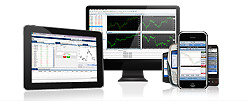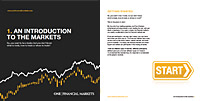

Australia posts shock Q3 current account deficit as exports shrink
By Ambar Warrick
Investing.com-- Australia saw an unexpected current account deficit in the September quarter, data showed on Tuesday, as slowing growth in major trading partner China and a fall in commodity prices from annual peaks dented the value of exports.
Australia’s current account balance shrank to a negative 2.3 billion Australian dollars (1 A$= $0.6713) in the three months to September 30 from A$18.3 billion in the prior quarter. The reading also severely missed estimates for a surplus of A$10.5 billion.
Net exports from Australia now dented economic growth by 0.2% during the quarter, data from the Australian Bureau of Statistics (ABS) showed.
The current account deficit was primarily driven by a sharp drop in the value of goods exported. Net goods exported in the September quarter fell to A$38.87 billion from A$47.62 billion in the prior quarter.
A bulk of this slowdown was driven by weakening commodity demand in China, which is Australia’s largest trading partner. Slowing economic growth in the mainland, due to a resurgence in COVID-19 infections, severely weighed on the country’s appetite for exports.
The value of commodity exports also dropped during the quarter, as global commodity prices retreated further from peaks hit earlier in 2022.
The reading now bodes poorly for upcoming third-quarter GDP data from Australia, which is set to be released on Wednesday. Analysts expect the economy to have expanded at an annual pace of 6.2%, reflecting a lower basis of comparison due to the COVID-19 pandemic last year.
But GDP is also expected to grow 0.7% from the prior quarter, slower than the previous quarter’s reading of 0.9%. A post-COVID boom in Australia seen earlier this year may be running out of steam.
The dismal current account reading also comes ahead of an interest rate decision by the Reserve Bank of Australia later on Tuesday. The central bank is widely expected to hike interest rates by 25 basis points, as it struggles to strike a balance between fighting inflation and preventing an economic slowdown.
Weakening economic trends could see the bank announce a pause to its hiking cycle.
The Australian economy is now facing renewed headwinds from high inflation, which surged to a 30-year high in the third quarter. This, coupled with a sharp rise in interest rates this year to combat inflation, is expected to weigh heavily on economic growth.
Retail spending is also steadily slowing in the country, amid stagnant wage growth and worsening consumer sentiment.
The Australian dollar rose 0.2% after the reading. But the currency was nursing steep losses from the prior session.
Begin trading today! Create an account by completing our form
Privacy Notice
At One Financial Markets we are committed to safeguarding your privacy.
Please see our Privacy Policy for details about what information is collected from you and why it is collected. We do not sell your information or use it other than as described in the Policy.
Please note that it is in our legitimate business interest to send you certain marketing emails from time to time. However, if you would prefer not to receive these you can opt-out by ticking the box below.
Alternatively, you can use the unsubscribe link at the bottom of the Demo account confirmation email or any subsequent emails we send.
By completing the form and downloading the platform you agree with the use of your personal information as detailed in the Policy.






